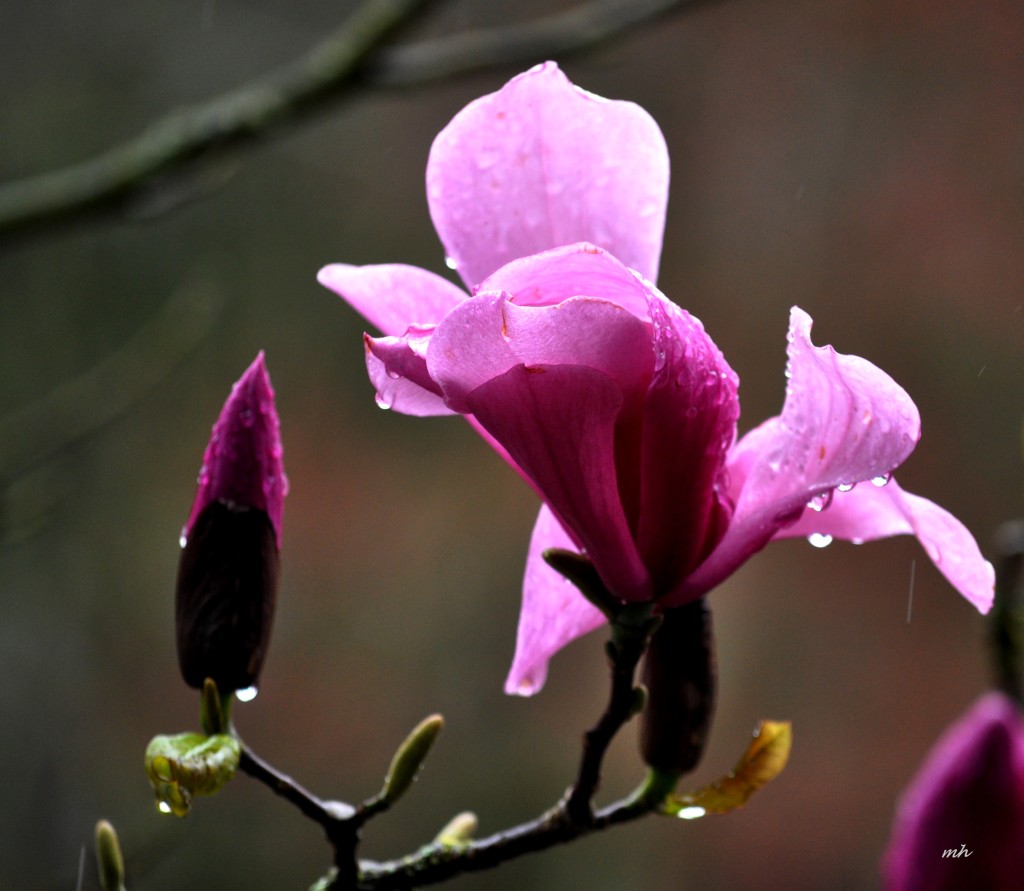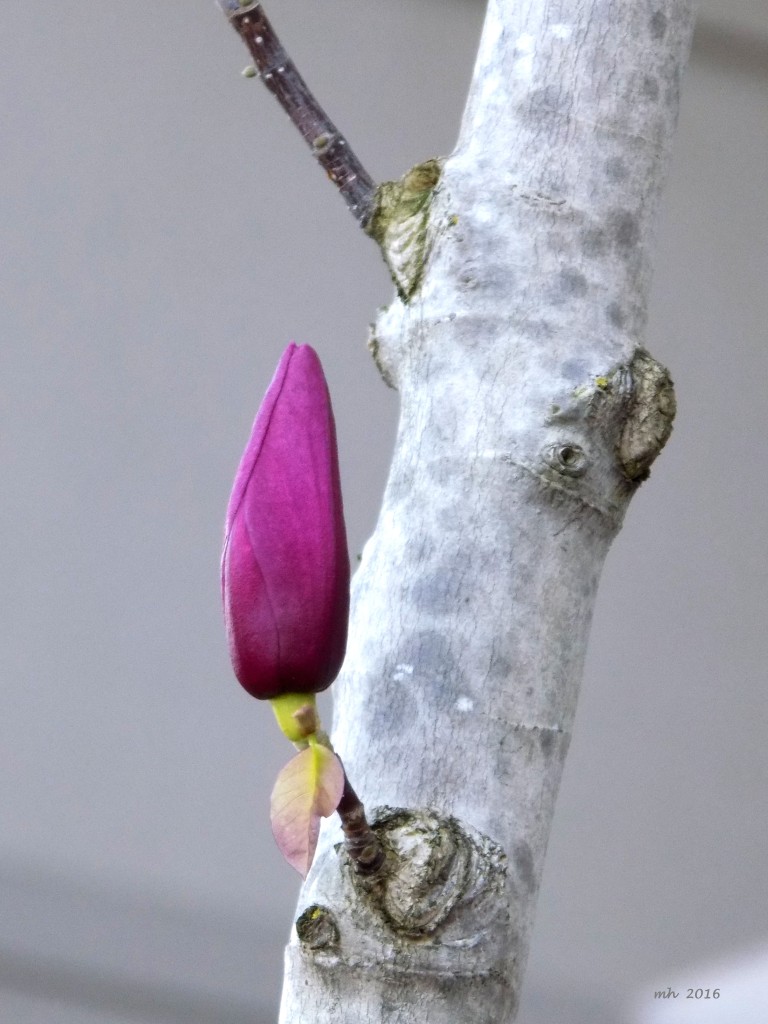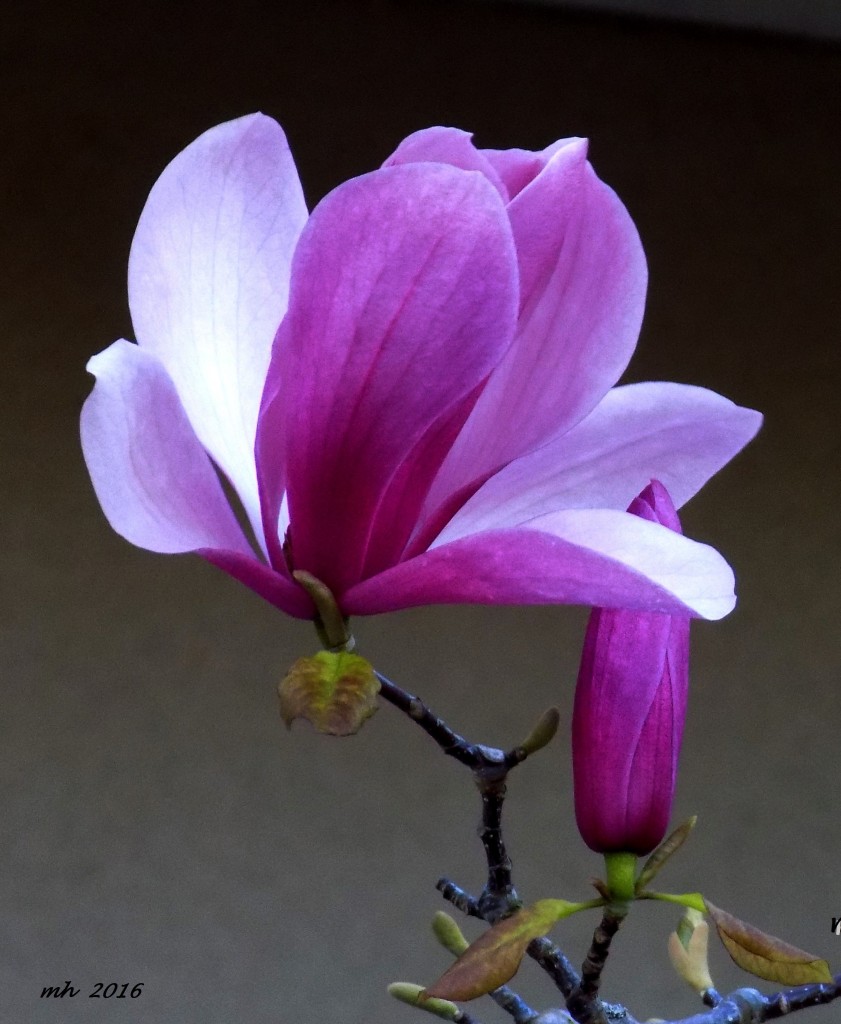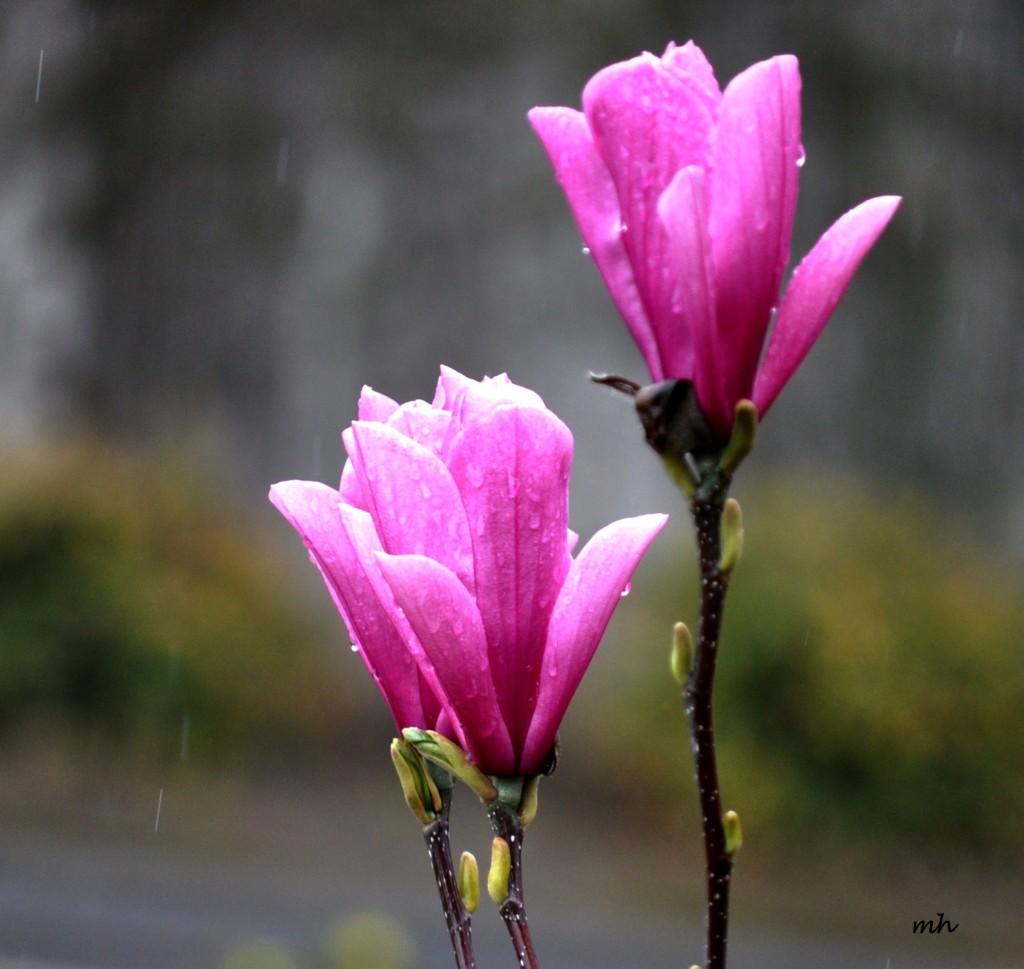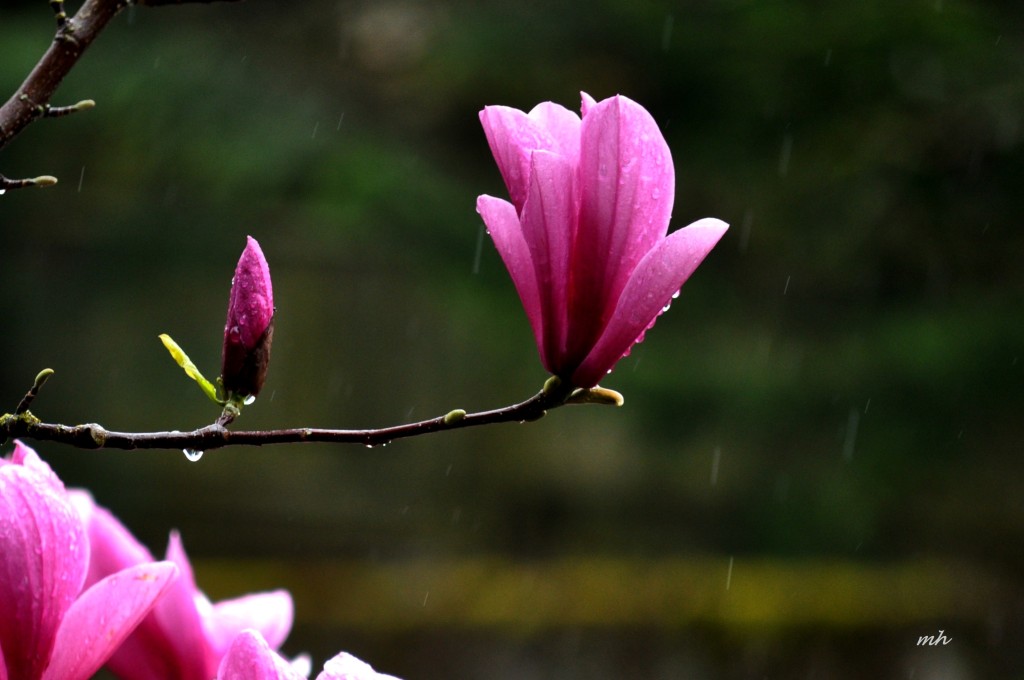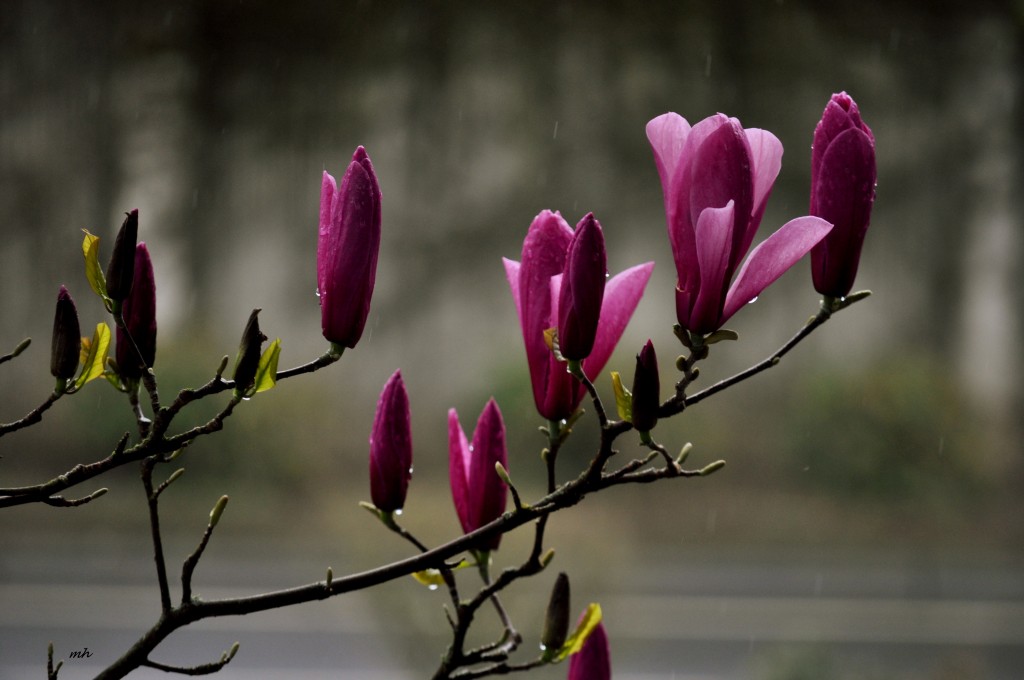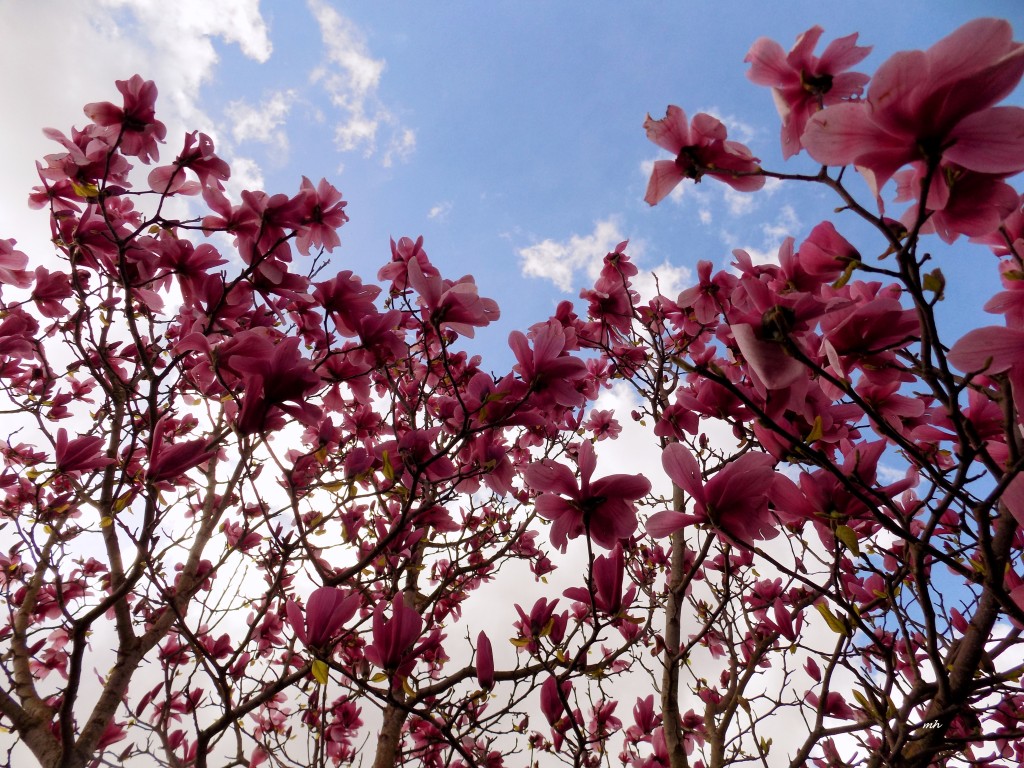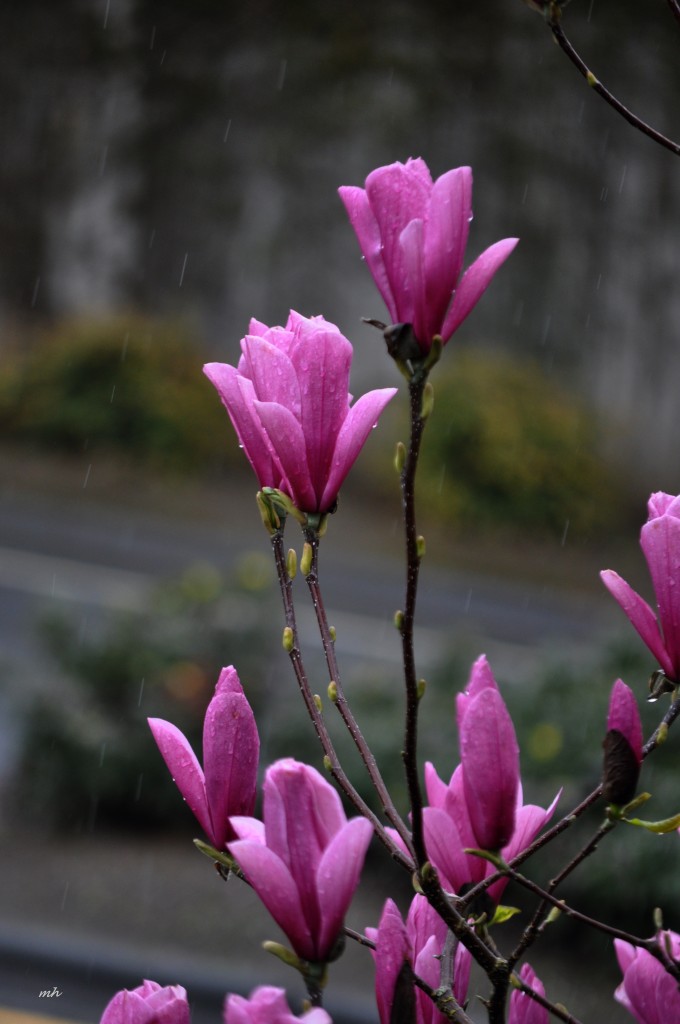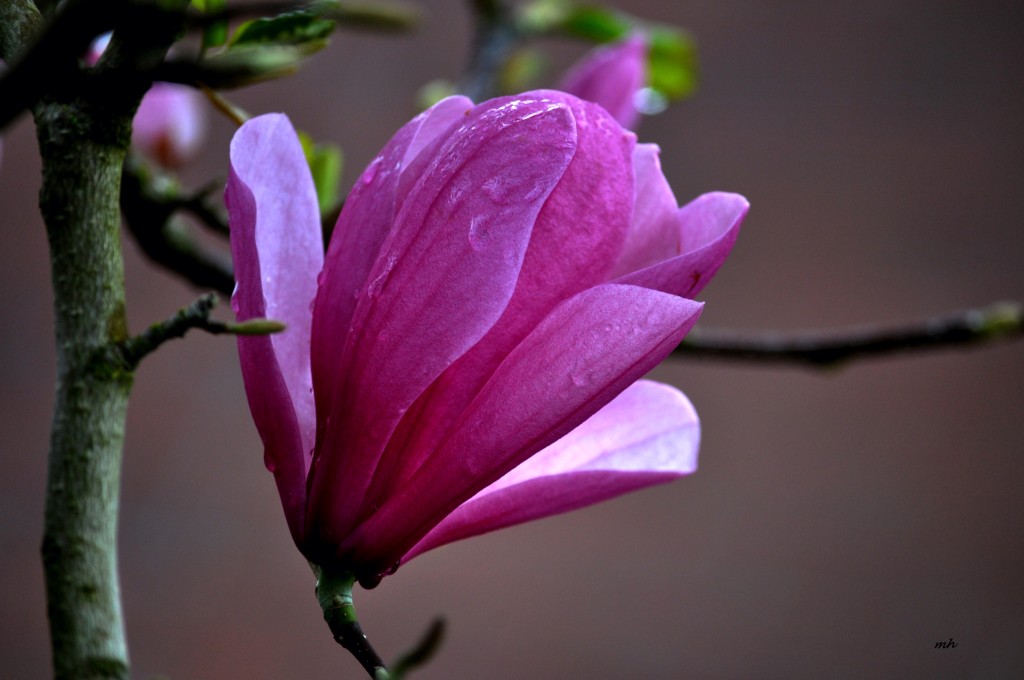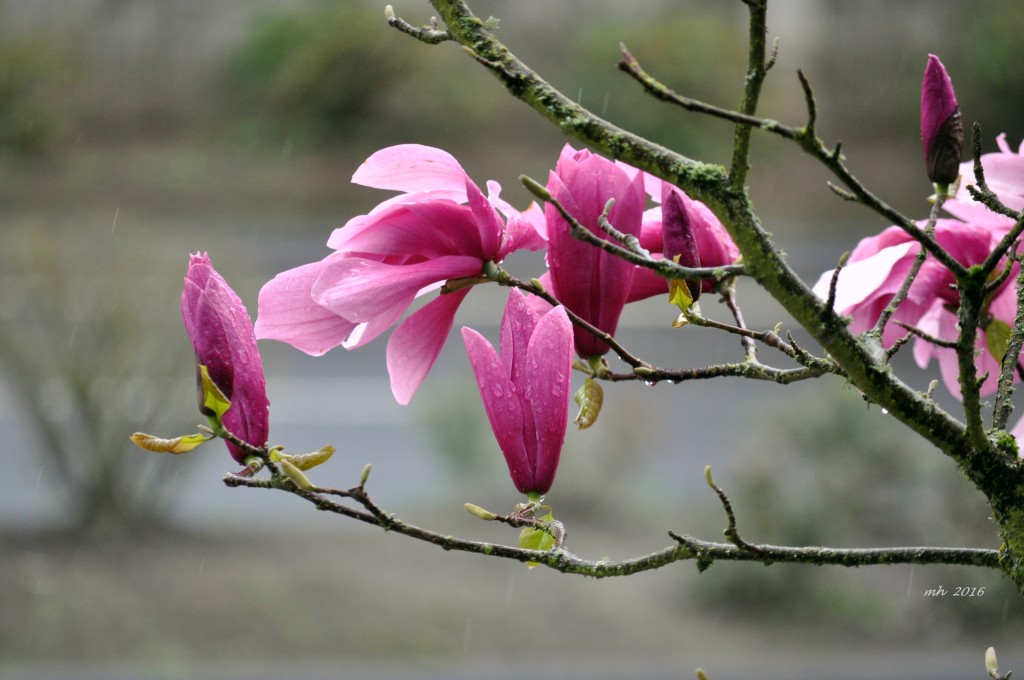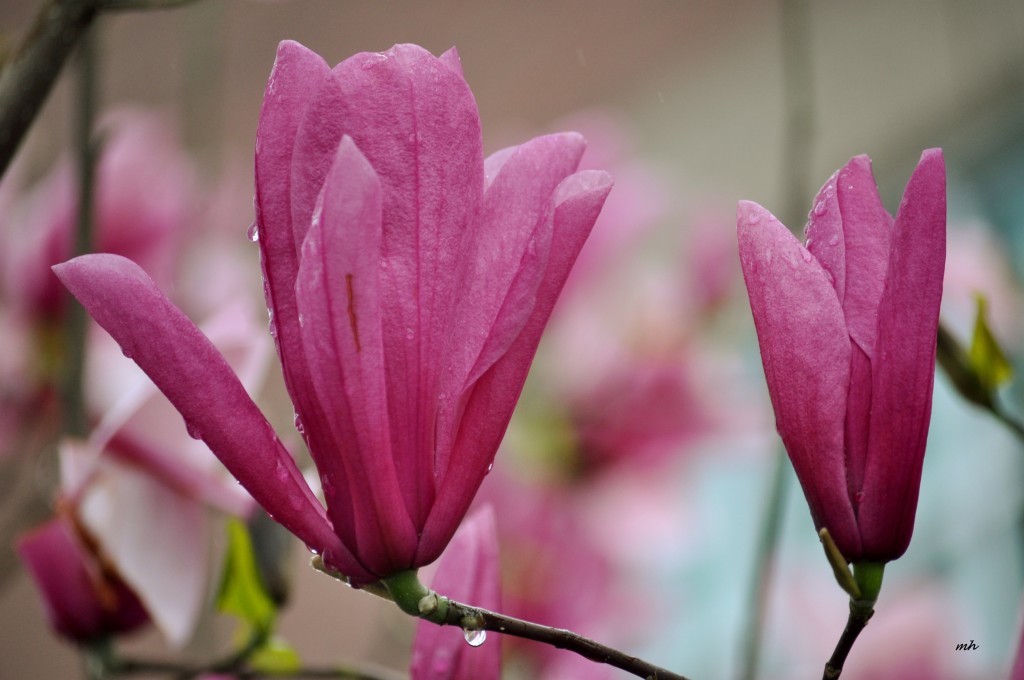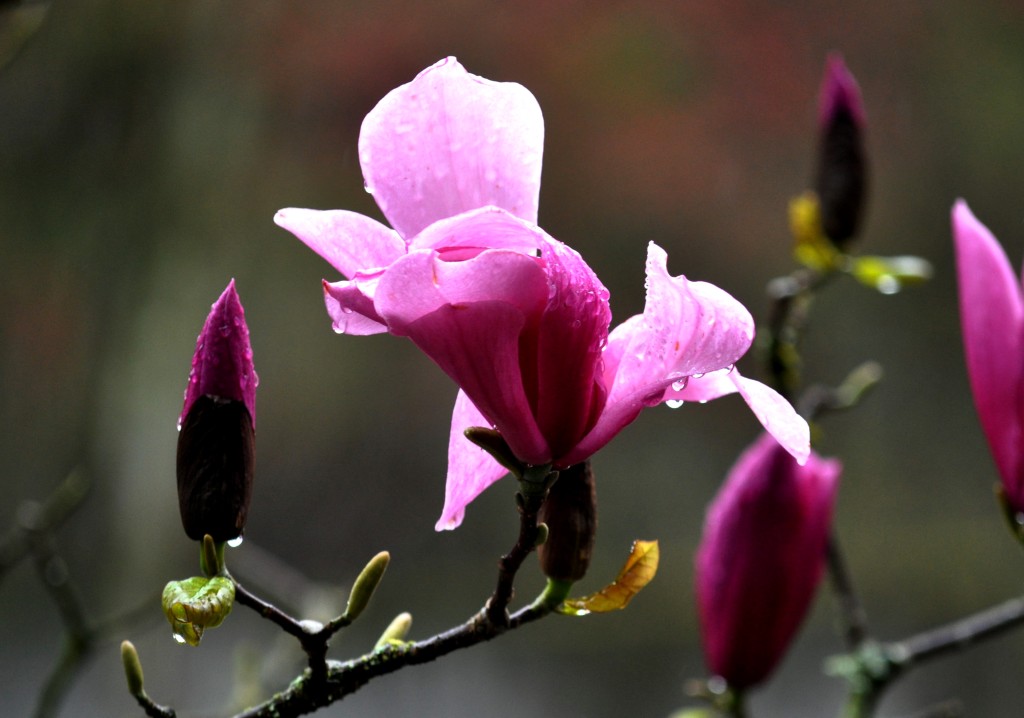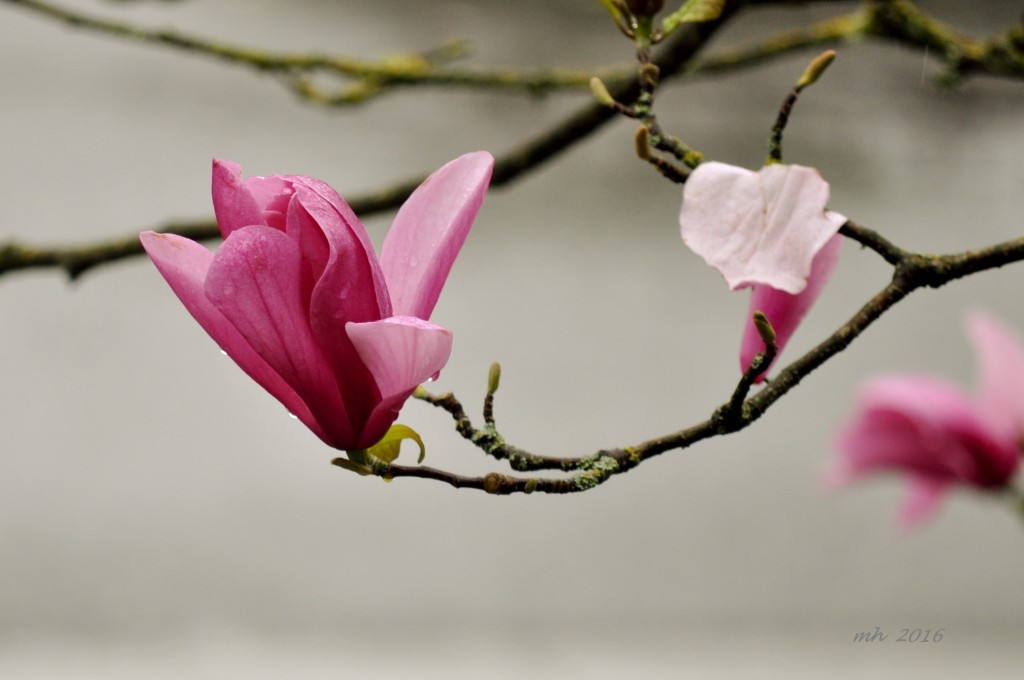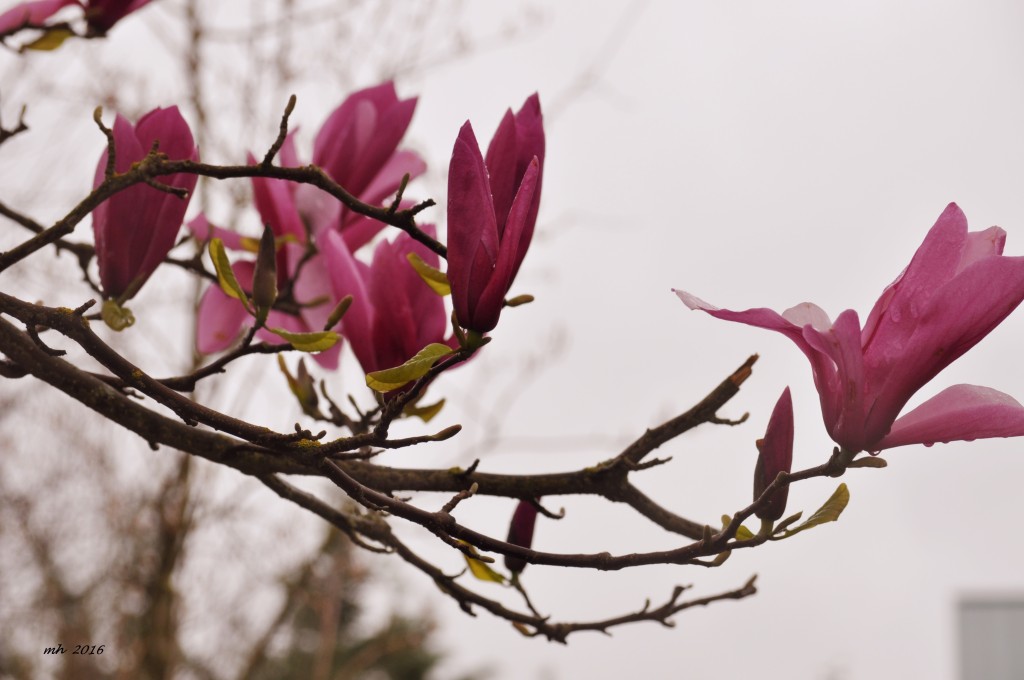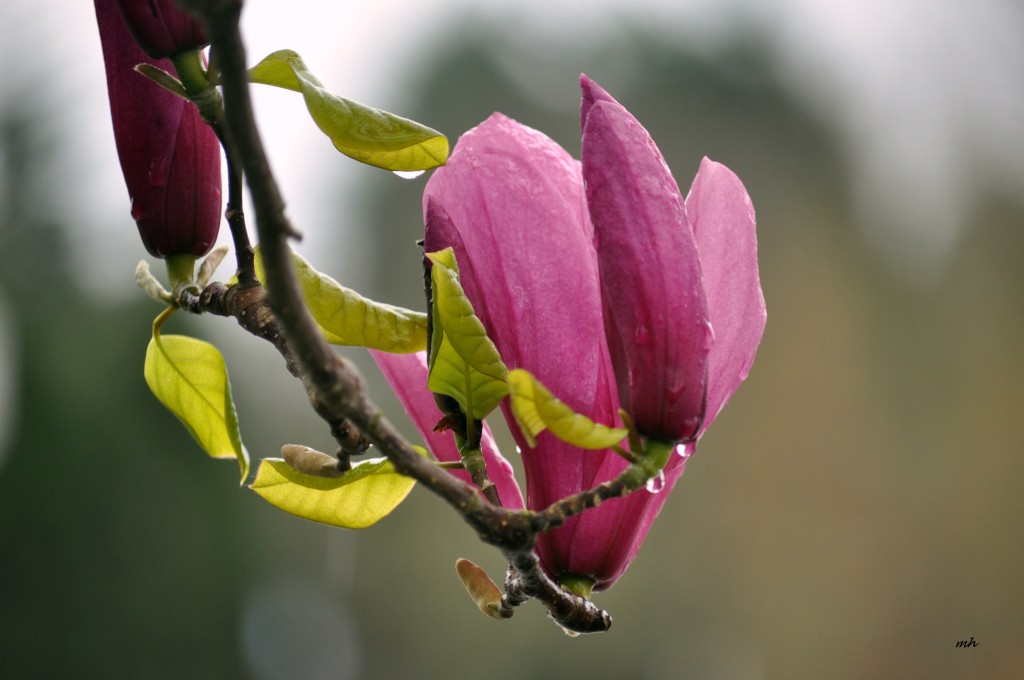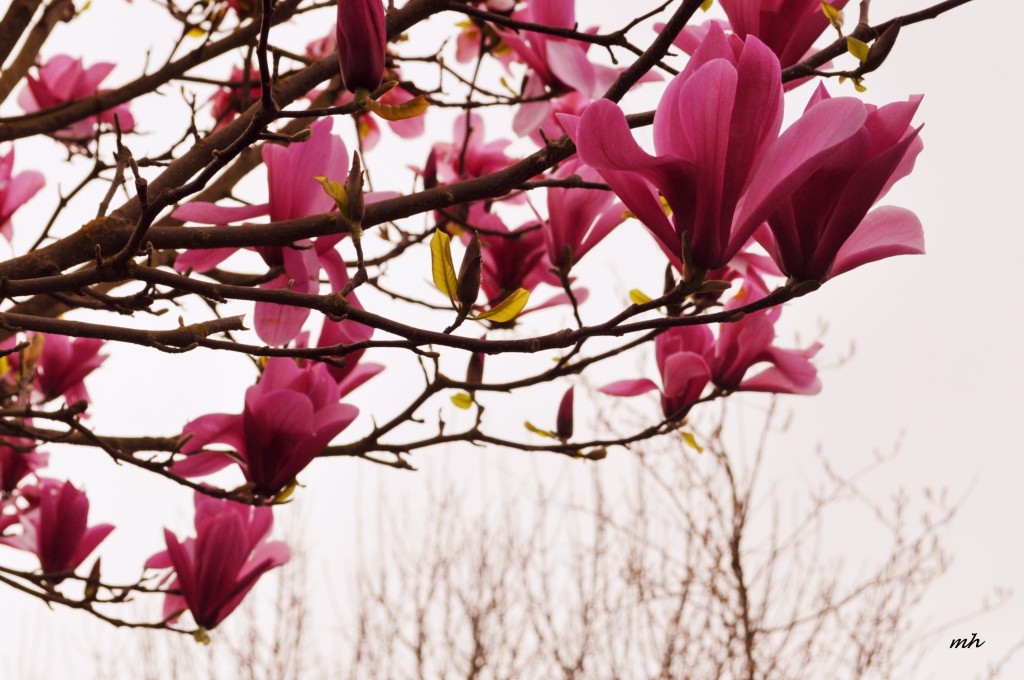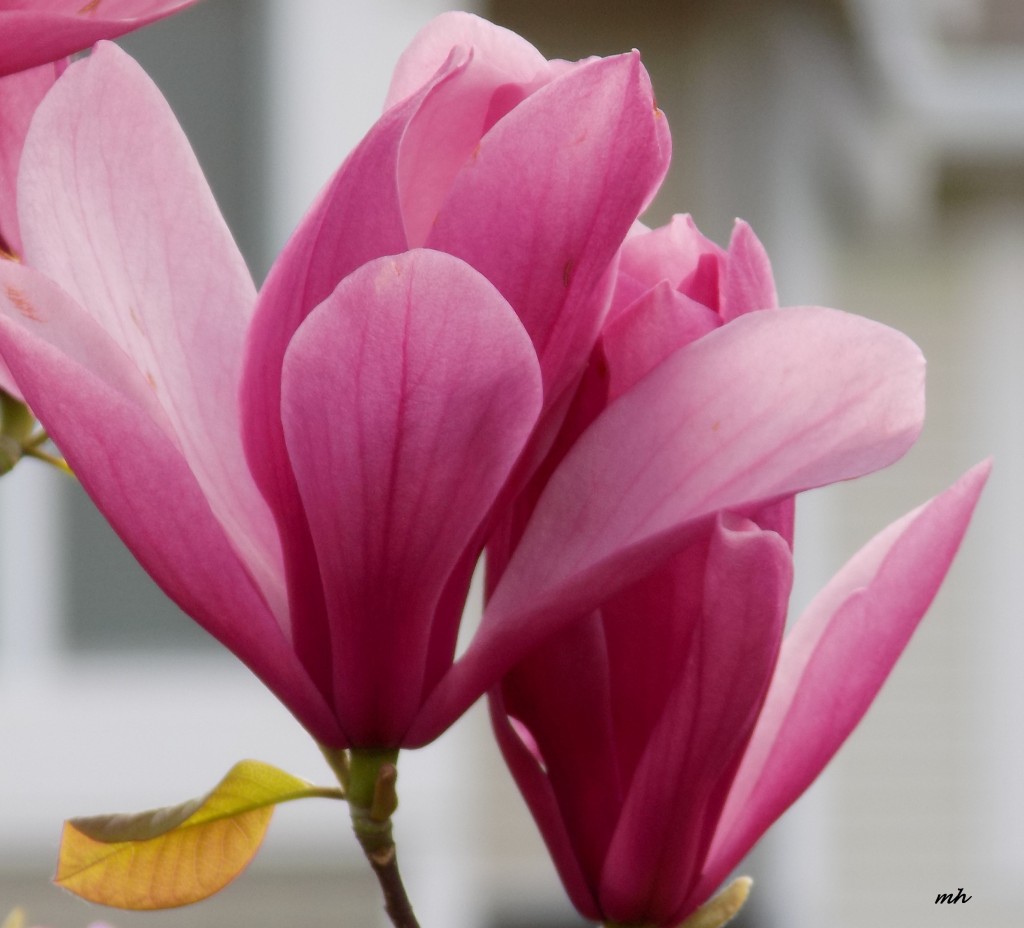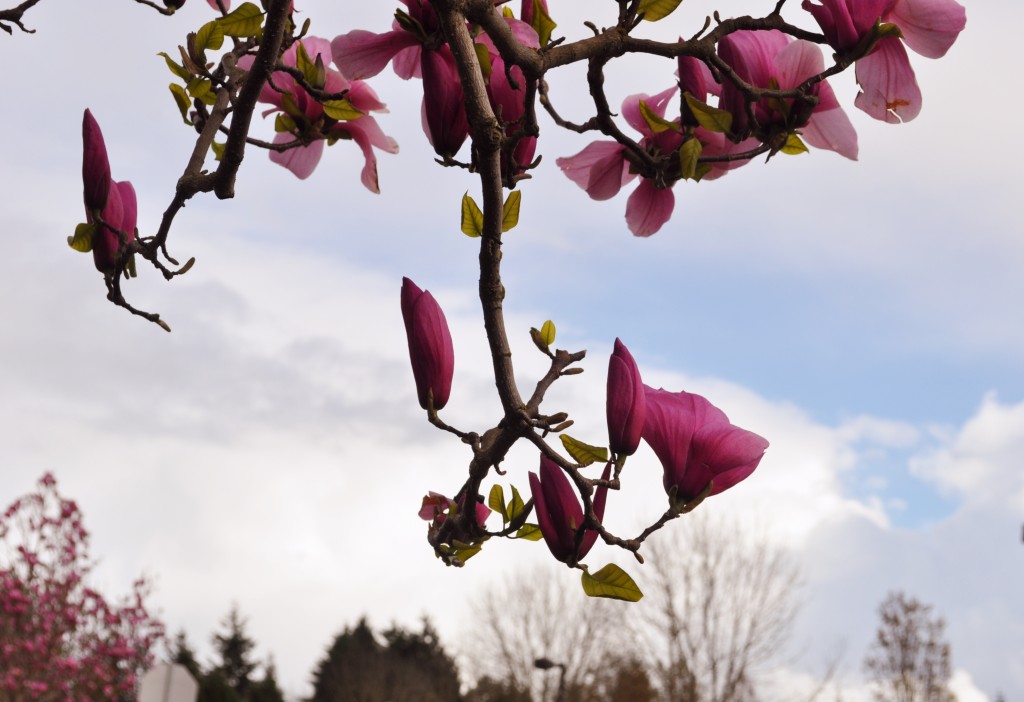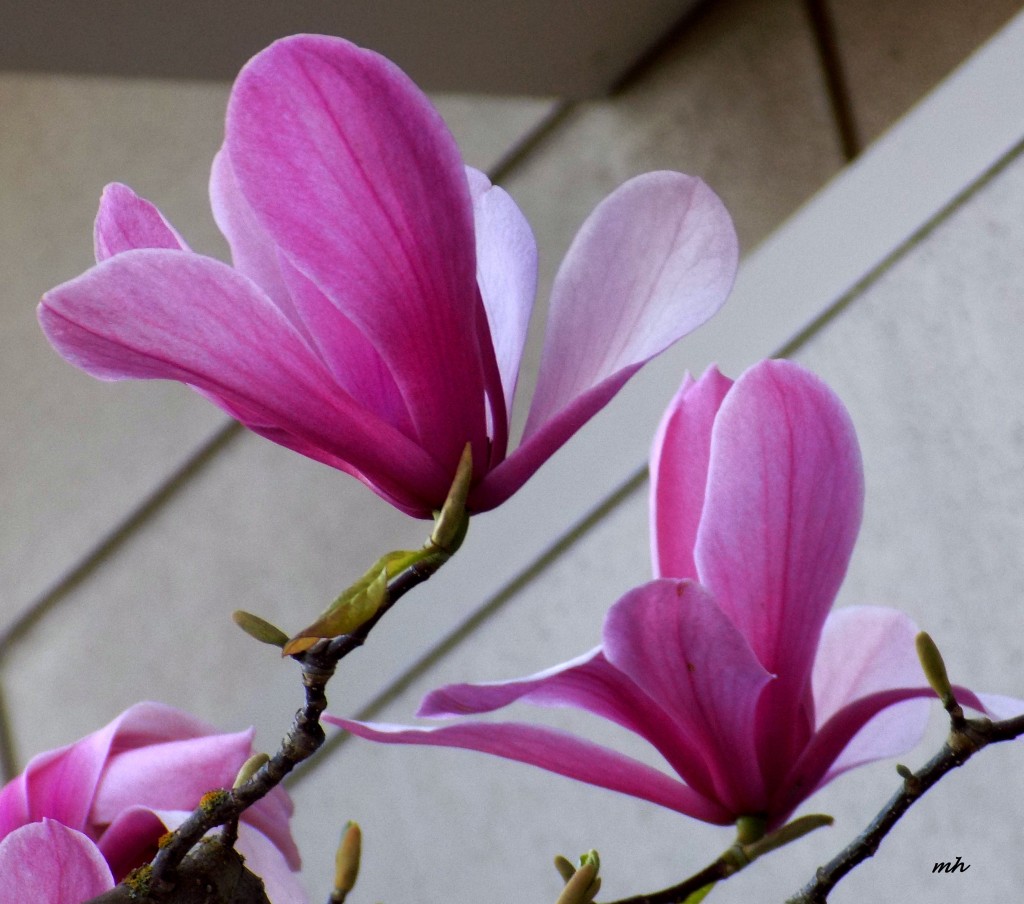Recent Pages: 1 2 3 4 5 6 7 8 9 10 10b 10c 11 12 13 15 16 17 18
18a 19 20 21 22 23 24 25 26 26a 27 28 29 30 31 32 33 34
35 41 42 43 44 45 46 47 48 49 50 51 52 53 54 55 56 57 58
Mộc Lan Tím
Purple Magnolia
.
Common Names:
There are several names that are associated with this tree. You may see lily magnolia, purple magnolia, woody-orchid, red magnolia, Jane magnolia, Japanese magnolia, tulip magnolia or Mulan magnolia
The lily magnolia (Magnolia liliflora or Magnolia liliiflora) is a deciduous shrub that sports perfumed blossoms that can be pink or reddish-purple.
It is one of the smaller species found in the Magnolia genus. This shrub has been crossed with the Yulan magnolia (Magnolia denudata) and the result is the saucer magnolia (Magnolia x soulangeana.)
Latin Name:
You may see two different spellings used for this species. It can be either Magnolia liliflora or Magnolia liliiflora. It is placed in the Magnoliaceae family along with the other magnolia trees and shrubs, the banana shrub (Michelia figo).
Preferred USDA Hardiness Zones:
If you live in Zones 5-9, this is a possible choice for your garden.
.
Mộc Lan Tím – Purple Magnolia
Những cây hoa mộc lan thân gỗ cứng, nhành cao, lá bóng dày mướt. Mùa đông rụng hết lá, mùa xuân từ những đầu cành nở rộ những cánh hoa lớn như hoa sen, vươn thẳng lên trời.
Khi hoa nở thì lá non chưa mọc, cành lộc chưa đâm chồi, nhìn cây ra hoa chỉ tím hay trắng ngát một khoảng trời – chỉ có hoa và hoa.
Hoa mộc lan có tự lâu lắm. Dấu hóa thạch từ niên đại khủng long. Hoa hiện hữu trước khi ong bướm tiến hóa. Hoa không có đài và mật nhụy, chỉ có hương thơm ngọt ngào để thu hút loài bọ cánh cứng làm nhiệm vụ thụ phấn cho hoa. Mổi bông hoa có nhị và nhụy hoa sắp xếp thành hình xoắn ốc trên đế hoa hình nón.
Người xưa dùng hoa để chửa trị một số bệnh về đường tiêu hóa. Vỏ mộc lan trắng làm thuốc điều trị trầm cảm, dị ứng, hen suyễn và giảm cân. Chồi của mộc lan tím (Magnolia liliiflora), được dùng trị nhiễm trùng đường hô hấp kinh niên, nhiễm trùng xoang và sung huyết phổi.
The outside of the flowers is purple, and it is from this that the hybrids get their shades of pink and rose and crimson.
It can be readily understood what a triumph it was to cross these species successfully, for the hybrids are hardy, largeflowered and fragrant; and they present several new and most desirable colours. In this group are the following: Alexandrina, grandis, Lennei, Norbertiana and speciosa.
For after the blossoms the fruits and foliage are both decorative.
Size & Shape:
The lily magnolia will reach a mature size of about 10-15′ tall and wide and form into a rounded shape.
Exposure:
In order to promote the best flowering, find a site in your garden that receives full sun. It is also able to grow in spots with partial shade.
Foliage/Flowers/Fruit:
The dark green leaves are up to 4″ wide and 8″ long.
At the end of winter/beginning of spring, you will see pink or reddish-purple buds unfurling. They have a pleasant fragrance and are up to 7″ long depending on the variety. The blossoms will continue throughout the season and some may appear in summer also.
As with other magnolia species, pollination is facilitated by beetles. The result is an aggregate of dry fruits called follicles. They are purple or brown.
Design Tips:
This shrub can definitely be used as a focal point in the garden since it will be covered with gorgeous blossoms.
If you want a variety that is not quite as wide as the species, look for ‘Gracilis’. The leaves are also narrower.
.
Maintenance/Pruning:
You should not need to do much pruning for this species or for magnolia trees and shrubs in general. If you find that some trimming is in order (i.e. you have wood that has become dead, damaged or diseased), you should make your cuts right after the shrub has finished blooming.
Pests
Magnolia scale (Neolecanium cornuparvum) suck out sap from the stems. Encourage ladybugs to visit your garden as they will snack on the scales and help remedy the problem to some degree. Horticultural and dormant oils can be used at different stages in the life cycle, though they will not be so effective against adults that have formed a wax barrier on their bodies.
Diseases:
Black sooty mold can form on plants that are infested with the magnolia scale. They drop a sugary substance called honeydew that the mold grows upon. It can also attract other insects like ants to the shrub. Control the scales to help control the mold problem.
Powdery mildew is another fungal problem that can crop up. There are ways to control powdery mildew organically
March 15 – 2016
Photos: hannahlinhflower
Words: LSV tổng hợp từ Wiki & Internet
Tài liệu tham khảo:
– Wiki: Magnolia, The Brooklyn Botanic Garden (BBG)
– Southern Living/home garden
– The Arnold Arboretum Harvard of University/Collection Researcher
– About-Garden com.
